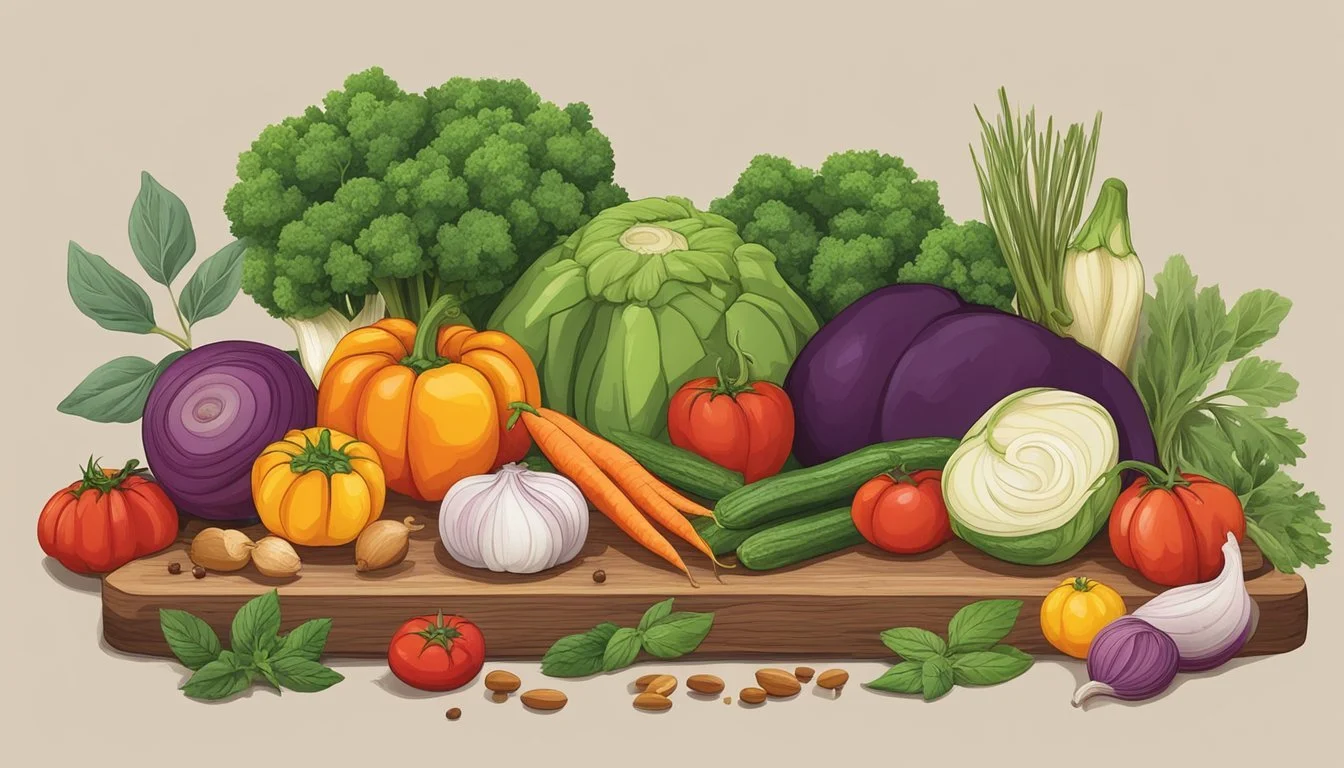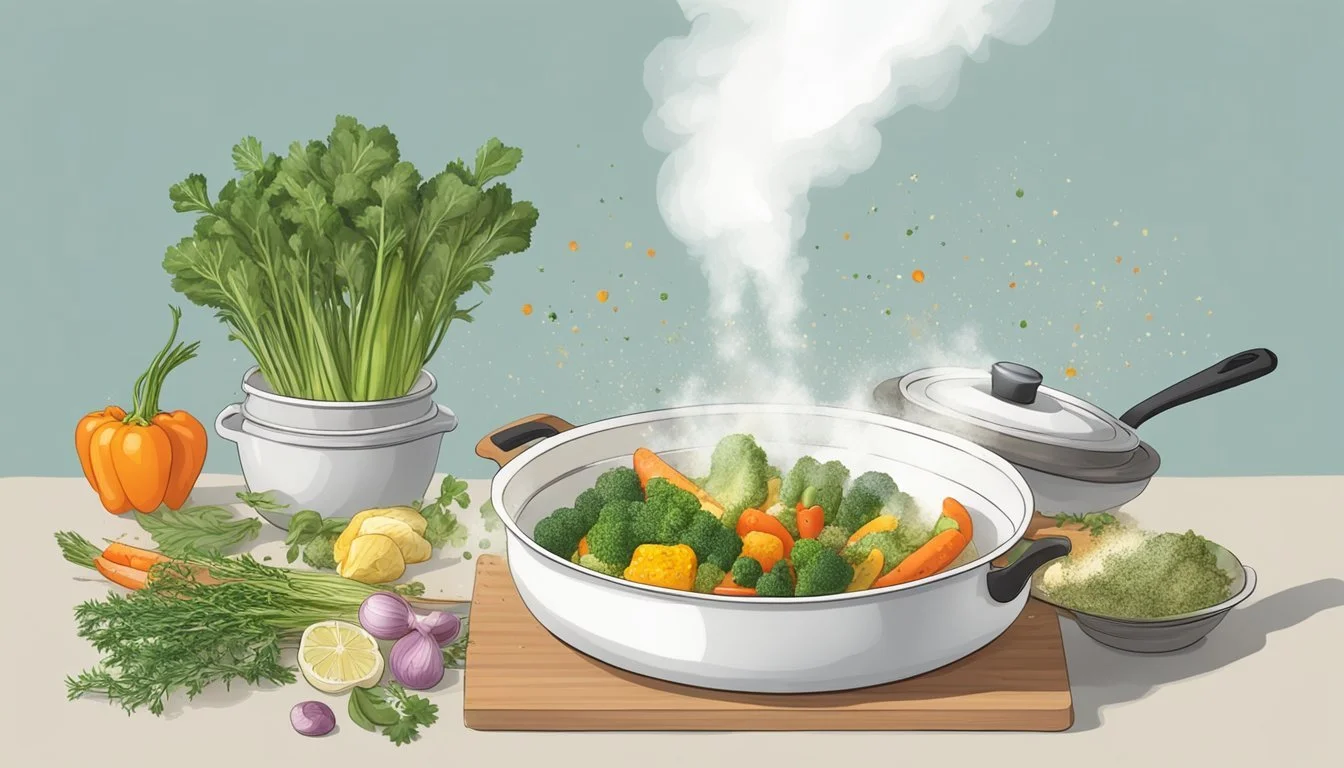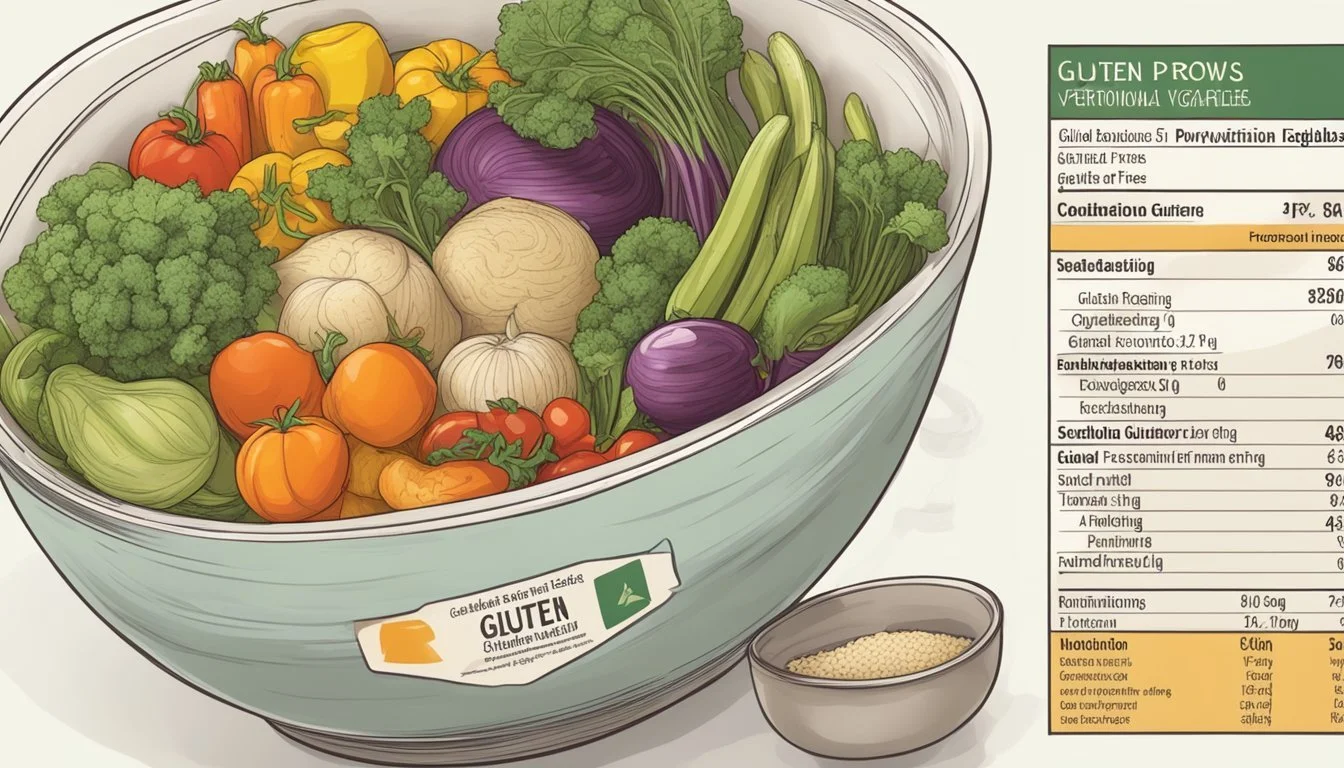How to Reheat Gluten-Free Provencal Vegetables
Simple Steps for Best Results
Reheating gluten-free Provencal vegetables doesn't have to be a culinary challenge. These deliciously seasoned vegetables, a staple in many Mediterranean kitchens, can easily be revived with the right techniques. Reheat your Provencal vegetables in the oven by placing them on a baking sheet, covering with aluminum foil, and warming them at a low temperature to retain their moisture and flavor.
One essential tip is to ensure the vegetables are cooled to room temperature before storage. Stored in an airtight container, they can be refrigerated and remain fresh for a couple of days. The key lies in their gentle reheating process which ensures that their vibrant flavor and texture are preserved.
Gluten-free eaters can enjoy this reheating method without worry. The absence of gluten substitutes in Provencal recipes often simplifies the process, making it easier to maintain the dish's authenticity. With these straightforward steps, your leftover vegetables can be just as delightful as when they were first prepared.
Understanding Gluten-Free Dietary Needs
Gluten-free diets are essential for individuals with celiac disease or non-celiac gluten sensitivity. Gluten, a protein found in wheat, barley, and rye, triggers immune responses in those with celiac disease. This response can damage the small intestine and hinder nutrient absorption.
Celiac Disease requires strict avoidance of gluten. Foods such as vegetables, fruits, nuts, seeds, eggs, and meats are naturally gluten-free. These foods not only meet dietary needs but also provide essential nutrients without added saturated fat, sugar, or unnecessary carbohydrates.
Nutritional Information is crucial for a gluten-free diet. It is important to focus on foods rich in fiber, protein, and vitamins like folate, iron, and calcium. Fortunately, many naturally gluten-free foods are nutrient-dense. For example:
Vegetables like carrots, cauliflower, and spinach offer fiber and vitamins.
Proteins such as eggs and lean meats are gluten-free and vital for muscle health.
Fruits provide natural sugars and a range of essential nutrients.
Maintaining a balanced gluten-free diet involves regularly including these foods to avoid deficiencies and promote overall health. Gluten-free labeled products can also be helpful but should be checked for nutritional value, as some may contain added sugars and fats.
For those managing gluten-free diets, careful label reading and menu planning are necessary steps. Ensuring safe food choices will mitigate symptoms and promote better digestive health.
Essentials of Provencal Vegetables
Provencal vegetables are a staple of the Provence region, blending flavors from Mediterranean produce with fragrant herbs. These vegetables are integral to dishes such as ratatouille and shine when cooked with herbes de Provence, offering vibrant colors and robust taste.
Historical Significance of Provencal Cuisine
Provencal cuisine hails from the Provence region in southeastern France. It is deeply rooted in a historical emphasis on fresh, local produce. Traditionally, Provencal dishes incorporate abundant vegetables particularly suited to the region's sunny and warm climate.
Ratatouille exemplifies this culinary tradition by combining summer vegetables like eggplants, zucchinis, bell peppers, and tomatoes. The use of herbes de Provence, a classic blend of thyme, rosemary, and oregano, ties the ingredients together, creating a distinctive and aromatic flavor profile that marks the simplicity and beauty of Provencal cooking.
Selecting Fresh Vegetables
Choosing the right vegetables is crucial for achieving authentic Provencal flavors. When selecting vegetables for Provencal dishes, emphasize freshness and vibrant colors.
Look for firm, unblemished eggplants, which provide a hearty texture. Bell peppers should be vivid and crisp, contributing sweetness and color. Zucchinis should be small to medium-sized for tenderness without bitterness. Tomatoes must be ripe yet firm to avoid excessive moisture during cooking. Using the freshest garlic, onions, and potatoes ensures the fullness of flavor.
Incorporating these elements guarantees that Provencal vegetables are both visually appealing and delicious, epitomizing the essence of this celebrated regional cuisine.
Preparation Techniques Before Reheating
Ensuring that gluten-free Provencal vegetables are stored and prepared correctly before reheating is crucial for maintaining their flavor and texture. This involves careful attention during both the initial cooking stage and the storage process.
Initial Cooking and Baking Instructions
When preparing gluten-free Provencal vegetables, begin by preheating the oven to 400°F (200°C). Chop the vegetables into even pieces to ensure consistent cooking. Common choices include zucchini, eggplant, bell peppers, and tomatoes.
Toss the vegetables with olive oil, salt, and pepper in a large bowl. Ensuring even coating is vital for flavor consistency. Spread them out on a baking sheet lined with parchment paper to prevent sticking.
Bake the vegetables for 20-25 minutes, stirring halfway. Once cooked, they should be tender with slightly caramelized edges. Transfer the vegetables to a casserole dish, ready for storage if not serving immediately.
Proper Storage for Leftovers
Cool the vegetables completely before storage. This helps prevent condensation which can lead to sogginess. Once cooled, transfer the vegetables into airtight containers.
For short-term storage, refrigerate the vegetables for up to 4 days. It is best to use shallow containers to help the vegetables cool evenly.
For long-term storage, freezing is an option. Spread the vegetables on a baking sheet lined with parchment paper. Place the sheet in the freezer for a few hours until the vegetables are solid.
Transfer the frozen vegetables to a freezer-safe bag or container and label with the date. This prevents them from clumping together and makes it easier to reheat portions as needed. Use the frozen vegetables within six months to avoid freezer burn.
Reheating Methods and Best Practices
To ensure the best flavor and texture for gluten-free Provencal vegetables when reheating, use the oven or other effective techniques, adjusting cooking times and methods as required. These practices will help maintain the dish's integrity and deliciousness.
Oven Reheating Procedure
Begin by preheating the oven to 375 degrees Fahrenheit. Spread the leftover vegetables in an even layer in a casserole dish, ensuring they are not overcrowded. Cover the dish with aluminum foil to prevent moisture loss.
Reheat in the oven for 10-15 minutes until the vegetables are hot and bubbling. For added caramelization, remove the foil during the last 5 minutes. Check for hot and evenly reheated veggies before serving.
Alternative Reheating Techniques
For quicker options, consider using a microwave or stovetop. To reheat in the microwave, place the vegetables in a microwave-safe dish, cover with a lid or microwave-safe wrap leaving a small vent, and heat on high for 2-3 minutes, stirring halfway.
For stovetop reheating, use a skillet over medium heat. Add a small amount of oil, if necessary, to prevent sticking. Stir frequently until heated through. Both methods are efficient but may not preserve texture as well as oven reheating.
Flavor and Seasoning Adjustments
Adjusting flavors and adding the right seasonings can significantly enhance the taste of gluten-free Provencal vegetables after reheating. Focus on selecting fresh and dried herbs, balancing salt, and using high-quality olive oil.
Enhancing Taste Post-Reheating
To boost the flavor of reheated Provencal vegetables, consider adding a dash of extra virgin olive oil. This enhances richness and helps distribute seasonings evenly.
Sprinkle some sea salt and ground black pepper for basic seasoning.
If the vegetables feel a bit dry, a light drizzle of olive oil before reheating can help maintain moisture.
Using quality herbes de Provence infuses a distinctive Provencal essence. This blend often includes thyme, rosemary, and oregano, which complement the vegetables well.
Recommended Herbs and Spices
For an authentic Provencal taste, use a mix of fresh and dried herbs. Fresh parsley can be added after reheating for a burst of color and freshness.
Thyme and rosemary offer robust flavors suitable for a rustic touch, whether fresh or dried.
Consider adding a pinch of dried oregano or basil for additional depth.
Herbes de Provence is particularly effective, providing a balanced blend of thyme, rosemary, basil, oregano, and sometimes lavender.
Adjust seasoning levels gradually to match personal taste without overpowering the vegetables.
Accompaniments and Serving Suggestions
To elevate your gluten-free Provencal vegetables, consider pairing them with complementary proteins and sides, and presenting them thoughtfully for gatherings.
Pairing with Proteins and Sides
Provencal vegetables pair well with a variety of proteins and sides. For vegetarian options, consider serving them with a tian dish or a mixed green salad. Cheese lovers might appreciate a sprinkle of parmesan cheese.
For those who enjoy meat, chicken or beef make excellent main courses to accompany the vegetable dish. It can also sit well alongside seafood, such as grilled shrimp or baked salmon. Crusty bread is a delicious side, useful for soaking up the rich flavors.
For a vegan approach, a plant-based protein like tofu or tempeh could be an ideal match. A simply prepared grain, like quinoa or brown rice, adds both nutrition and texture. Nutrition information becomes essential, noting that Provencal vegetables are rich in vitamins and low in calories.
Presentation Tips for Gatherings
When hosting a dinner party, presentation is key. Use an attractive serving dish or a rustic iron skillet to serve directly. This adds an appealing, hearty feel to the meal.
Arrange vegetables in a layered pattern to highlight their vibrant colors. Garnishing with fresh herbs such as thyme or parsley not only enhances the look but also complements the flavors.
For a communal feel, consider placing the vegetables in the center of the table, allowing guests to serve themselves. Pair with side dishes like a mixed green salad or crusty bread for a balanced meal. Adding a cheese board to the table can also create an elegant and inviting atmosphere.
Keep it simple but elegant, ensuring that the vegetables are the star of the show while harmonizing with the other elements on the table.
Safety and Food Hygiene
When reheating gluten-free Provencal vegetables, proper safety and food hygiene practices are crucial. Use clean utensils and surfaces to prevent cross-contamination, which is essential for maintaining the dish's gluten-free integrity.
Storage of leftovers is a key factor. Ensure these vegetables are promptly transferred to an airtight container and refrigerated within two hours of cooking. If you plan to store them for an extended period, use the freezer.
Before reheating, remove the vegetables from the refrigerator and let them sit at room temperature for a few minutes. This can help to maintain an even temperature during reheating, reducing the risk of bacteria growth.
Cover your vegetables with aluminum foil when reheating in the oven. This helps to retain moisture and ensure even heating. Avoid using the microwave for substantial reheating; it can cause uneven heating and potentially leave cold spots where bacteria can thrive.
Ensure all vegetables reach an internal temperature of at least 165°F when reheated. This is critical for killing any potentially harmful bacteria.
Keep in mind that maintaining a diet low in cholesterol and sodium while incorporating unsaturated fats can contribute to overall health. Proper storage and reheating techniques play a part in ensuring the nutritional quality of your meals remains intact.
Following these steps will help ensure your gluten-free Provencal vegetables are both safe and delicious.
Nutritional Information
Reheating gluten-free Provencal vegetables ensures that you retain their nutritional benefits. These vegetables are rich in vitamins, minerals, and antioxidants.
Calories: One serving of reheated Provencal vegetables typically contains around 80-100 calories. This makes it a low-calorie option, perfect for those watching their caloric intake.
Fat Content: These vegetables contain minimal amounts of saturated fat, making them heart-friendly. They usually have less than 1 gram of saturated fat per serving.
Sodium: The sodium content can vary based on seasoning but tends to remain moderate, generally less than 200 milligrams per serving.
Carbohydrates: Reheated Provencal vegetables are a good source of carbohydrates, with a serving containing around 15 grams. This includes beneficial complex carbs.
Fiber: These vegetables are high in dietary fiber, helping with digestion. You can expect around 3-4 grams of fiber per serving.
Sugar: Natural sugars present in the vegetables contribute to a small amount, generally less than 5 grams per serving.
Protein: The protein content is modest, with around 2-3 grams per serving, which complements a balanced diet.
Micronutrients: These vegetables are rich in vitamin C, vitamin A, and potassium, contributing to overall well-being.
Additional Nutritional Facts:
Antioxidants: High in antioxidants, key for reducing inflammation.
Low in Calories and Fat: A great addition to any weight management plan.
These nutritional attributes make reheated gluten-free Provencal vegetables a healthy and delicious choice.








